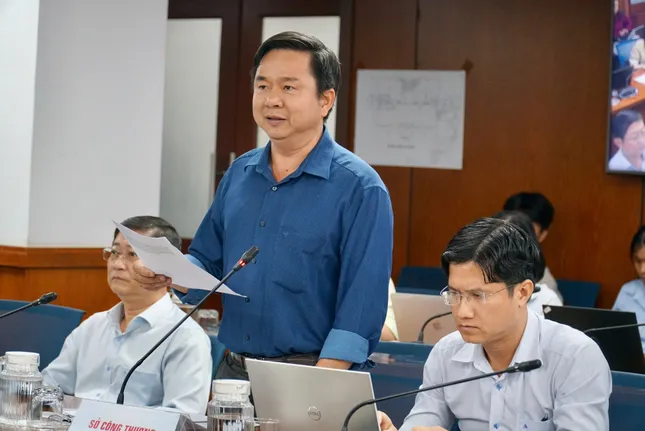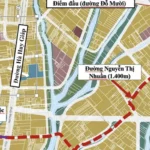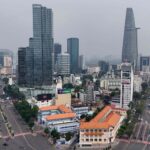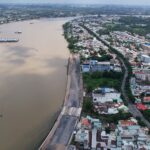In the afternoon of June 12, at a press conference on Ho Chi Minh City’s socio-economic situation, Mr. Nguyen Le Tan, Deputy Head of the Energy Department of the Ho Chi Minh City Department of Industry and Trade, provided information on the control of chemical trading activities in Kim Bien Market. It is known that this market is considered a hub for chemical trading establishments in the city.
According to Mr. Tan, the Ho Chi Minh City Department of Industry and Trade has been closely coordinating with units such as the People’s Committee of District 5, Ho Chi Minh City Police, PC03 Police, Market Management, and the Market Management Board to tighten inspection and control in this area.

Mr. Nguyen Le Tan, Deputy Head of the Energy Department, Ho Chi Minh City Department of Industry and Trade, at the press conference. Photo: Anh Nhan.
Various measures have been implemented, including reviewing and updating the list of chemical trading establishments, updating the goods catalog, and requiring signed commitments to not trade banned or unidentified chemicals.
“Periodic and surprise inspections have also been strengthened to detect and handle violations related to business conditions, chemical origins, and fire prevention and control,” said Mr. Tan.
According to statistics, in 2024, the Ho Chi Minh City Market Management Department inspected 45 cases related to chemicals, detecting 37 violations with a total value of goods violating over VND 215 million and a fine of over VND 625 million. In the first six months of 2025, five more violations were discovered, with a total fine of VND 58 million.
Mr. Tan shared that during the inspection process, the authorities faced challenges due to the small-scale and mobile nature of the businesses, the lack of signage, the complex composition of chemicals, and the limited number of inspectors compared to the dynamic number of establishments.
Moving forward, with the amended Law on Chemicals taking effect, Ho Chi Minh City will update and disseminate new regulations to relevant organizations and individuals. At the same time, the Department of Industry and Trade proposes to build a centralized management model to curb spontaneous chemical trading in residential areas. The city is also developing a chemical database connected to the national system, combined with monitoring and early warning tools.
Additionally, Ho Chi Minh City will continue to implement periodic inspection plans, combat counterfeit goods, manage e-commerce, conduct post-inspection of food safety, and especially tighten control over chemicals across the city, ensuring that Kim Bien Market or any other location does not become a “hotspot” that poses risks to the community and the environment.
Presenting to the National Assembly: The Ho Chi Minh City Ring Road 4 Project: A Visionary Investment of Over VND 120,000 Billion.
The Ho Chi Minh City Ring Road No. 4 project is slated to commence construction this year and is expected to be completed by 2029. This ambitious infrastructure undertaking promises to revolutionize transportation in the region, offering a strategic route that will enhance connectivity and facilitate seamless travel. With a projected length of approximately 210 kilometers, this highway will encircle the city, providing a vital link between neighboring provinces and playing a pivotal role in decongesting the metropolis.
“Long An: The Surge of Investment with the Activation of Belt Road 4”
The latest updates on the progress of Belt Road 4, a vital transportation artery connecting five provinces in the South-Eastern region, have sparked a wave of real estate investments in the areas through which the project traverses. With the longest stretch of the route, Long An province has emerged as the focal point for attracting capital.





















